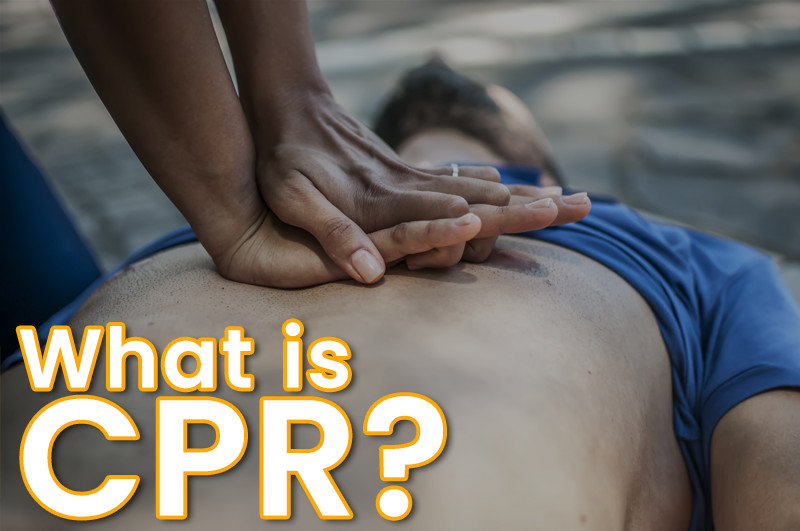News
Latest News
June 8, 2022

When someone goes into sudden cardiac arrest their heart stops beating which in return eliminates oxygenated blood from moving throughout the body including the heart and lungs. Each minute that passes without oxygen flow through the body makes the odds of survival lower and lower.
According to the American Heart Association immediate CPR can double or triple chances of survival after sudden cardiac arrest.
CPR stands for Cardiopulmonary Resuscitation. It is comprised of two steps: giving chest compressions and giving breaths. Chest compressions are the most important part of CPR and we are going to focus on them here. If you are not in a position where you are comfortable giving breaths, you can provide “hands-only CPR” to save a life. Hands-only CPR means you are performing chest compressions only.
To perform CPR, you want to be kneeling very close to the side of the person. Ideally, the person is laying on their back, on a HARD, FLAT surface. You put one knee at their shoulder and one at their waste. It is important to be up, over the person’s body. CPR can get very tiring, very quickly so you want to use your body weight to help you push down when performing chest compressions.
Place the palm of one hand right in the center of the chest, on the breastbone. Interlock your other hand on top of your first hand. Keep your elbows locked in and push down hard and fast on the center of the chest. According to the American Heart Association, you want to go at a rate of 100-120 compressions per minute. You want to go at a depth of at least 2 inches but no more than 2.4 inches.
When performing hands only CPR, don’t stop until either an AED arrives or until the ambulance arrives.
Here are the 5 crucial steps for high quality CPR according to the American Heart Association:
Many bystanders think the only option is to wait for EMS to arrive and assist the person, but every moment is crucial. CPR should be administered as soon as possible by whoever is around and capable.
Therefore, it is crucial to begin CPR immediately! Don’t be afraid, just be prepared.
To learn more about Defibtech and to join us on our quest to save lives from sudden cardiac arrest, visit www.Defibtech.com.
https://www.aed.com/blog/immediately-performing-cpr-is-crucial-this-is-why/
https://cpr.heart.org/en/resources/what-is-cpr